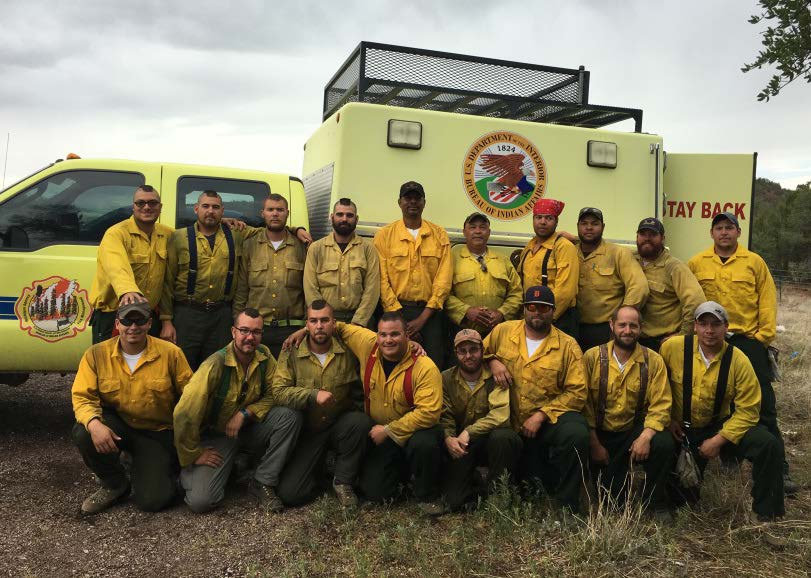You are viewing ARCHIVED content published online before January 20, 2025. Please note that this content is NOT UPDATED, and links may not work. Additionally, any previously issued diversity, equity, inclusion or gender-related guidance on this webpage should be considered rescinded.
Author: Robyn Broyles
On July 21, 2016 – BIA Central Office announced, for the first time ever, it was providing funding for labor, equipment and supplies to stand up Initial Attack Type 2 (IAT2) training handcrews.
Out of 22 applications, three were selected: Bay Mills Indian Community, Confederated Salish & Kootenai Tribes and Yakama Nation. These crews are vital to the Bureau and the Tribes hosting them because their purpose is to advance the qualifications of entry firefighters.
In order to be selected, applicants had to demonstrate their programs were sustainable, and could provide administrative support for the 20+ employees. They also showed a facility was available which could house the crew. Furthermore, units had to show they could provide career development opportunities while tracking training planning and certification requirements. Lastly, they must maintain the minimum standards to keep their IAT2 certification.
These crews create opportunities for other Tribal/agency firefighters to detail onto the crew to develop needed qualifications. These details allow firefighters to diversify their experience and work in a variety of terrain and fuel types that ultimately strengthen a firefighter’s overall background.
While the crew is considered a training crew for BIA’s purposes, an IAT2 is considered to be just a step down from an Interagency Hotshot Crew in performance and capability. The standard Type 2 IA crew is comprised of 20 individuals. There is a Crew Boss, three Type 1 Firefighters qualified as Type 5 Incident Commanders, three fallers, one of which is certified as a FAL2 and 13 basic firefighters. At least 60% of the crewmembers have at least one season of fire experience.
Starting in 2017, several crewmembers will be employees from the BIA Pathways Student Internship Program. By selecting employees that are earning degrees and fire qualifications in tandem, these training crews can effectively develop mid-level forestry and fire management leaders.
Congratulations to the Bay Mills Indian Community, Confederated Salish & Kootenai Tribes and Yakama Nation. The whole fire community looks forward to seeing the crews on fire assignments and learning more about them in the future.
For Immediate Release: June 1, 2016


